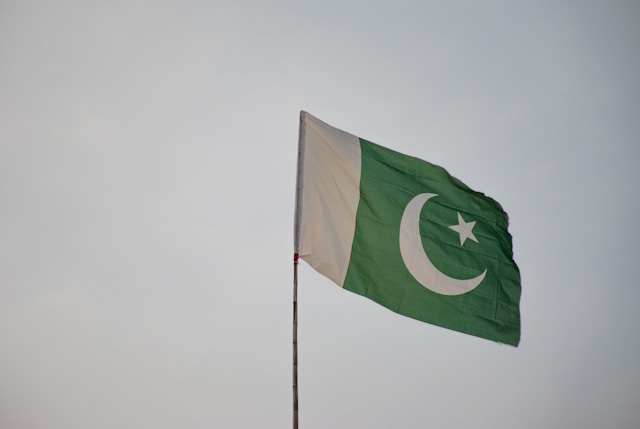Pakistan faces escalating fiscal challenges as total debt rises by 15% in a year, driven by domestic borrowing and high debt servicing costs
As of May 2024, Pakistan’s total debt has surged to an unprecedented PKR 67.816 trillion, according to a recent report by ARY News citing the State Bank of Pakistan (SBP). This marks a significant 15% increase in the federal government’s total debt over the past year, with an addition of PKR 8,852 billion. In May 2023, the total debt stood at PKR 58.964 trillion, escalating to PKR 66.086 trillion by April 2024.
The rise in debt is largely attributed to Pakistan’s domestic borrowing, which has reached a record high of PKR 46.208 trillion. This increase reflects the ongoing fiscal challenges faced by the country. The ‘Naya Pakistan Certificates,’ on the other hand, saw a notable 37.51% decrease in annual debt, amounting to PKR 87 billion. Additionally, the federal government’s external debt experienced a slight decline of 1.4%, dropping from PKR 21.908 trillion to PKR 21.608 trillion.
Reports from Pakistan’s finance ministry have highlighted the country’s growing fiscal pressures. In the first nine months of FY2023-24, Pakistan disbursed PKR 5.517 trillion for debt servicing. This included PKR 4.807 trillion for domestic debt servicing and PKR 710 billion for international debt obligations.
Embed from Getty ImagesThe fiscal operation report for the July-March period revealed that the federal government’s gross revenue receipts reached PKR 9.1 trillion. Out of this, PKR 3.8 trillion was allocated to provinces under the National Finance Commission (NFC) Award, leaving net revenue receipts at PKR 5.3 trillion. Under the NFC Award, Punjab received PKR 1.865 trillion during the period, while Sindh obtained PKR 946 billion. Khyber Pakhtunkhwa (KP) and Balochistan received PKR 623 billion and PKR 379 billion, respectively, from the divisible pool.
These figures underscore Pakistan’s growing debt burden amid efforts to maintain fiscal stability and meet financial obligations both domestically and internationally. The significant rise in domestic debt highlights the challenges the country faces in managing its finances and sustaining economic growth.
Analysis:
Political: Pakistan’s escalating debt crisis poses significant political challenges for the government. The rising debt levels may erode public confidence in the government’s economic management and lead to political instability. Opposition parties are likely to leverage the situation to criticize the government’s fiscal policies and handling of the economy. Additionally, the government’s ability to secure new loans or financial assistance from international institutions may be compromised, affecting its capacity to implement development projects and social welfare programs.
Social: The social implications of Pakistan’s mounting debt are profound. High debt servicing costs divert resources away from essential public services such as healthcare, education, and infrastructure development. This can exacerbate social inequalities and hinder efforts to improve living standards. Moreover, the economic strain may lead to increased unemployment and poverty, fueling social unrest and dissatisfaction among the population. The government’s focus on debt management may also limit its ability to address pressing social issues, further impacting the quality of life for many Pakistanis.
Racial: The debt burden may have different impacts across various ethnic and regional groups in Pakistan. Provinces such as Punjab, Sindh, Khyber Pakhtunkhwa, and Balochistan receive varying amounts of revenue under the NFC Award, which could lead to disparities in development and public service provision. Ethnic and regional tensions might rise if certain areas perceive themselves as being unfairly treated in terms of resource allocation. Ensuring equitable distribution of resources and addressing regional disparities will be crucial in maintaining social harmony and national unity.
Gender: Women and marginalized communities are likely to be disproportionately affected by the economic challenges stemming from Pakistan’s debt crisis. Reduced public spending on social services such as healthcare and education can exacerbate gender inequalities, limiting opportunities for women and girls. Economic hardships may also lead to increased household responsibilities for women, affecting their participation in the workforce and access to economic opportunities. Addressing gender-specific impacts and ensuring inclusive economic policies will be essential in mitigating the adverse effects of the debt crisis on women.
Economical: The economic implications of Pakistan’s rising debt are significant and multifaceted. High debt levels constrain the government’s fiscal space, limiting its ability to invest in economic growth and development. The need to service debt also puts pressure on the country’s foreign exchange reserves, affecting its balance of payments and currency stability. Furthermore, high domestic borrowing costs can crowd out private investment, slowing down economic activity. To address these challenges, Pakistan will need to implement effective fiscal reforms, improve revenue generation, and seek sustainable financing solutions.
